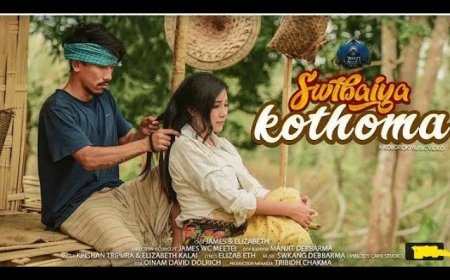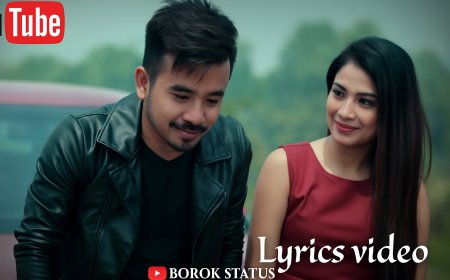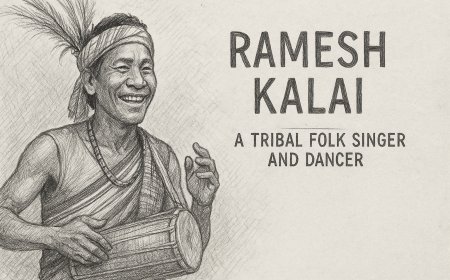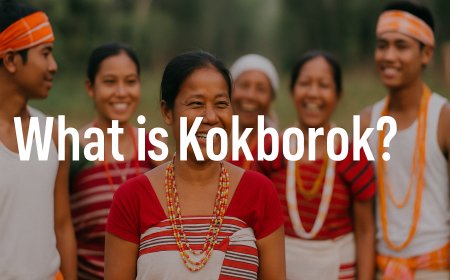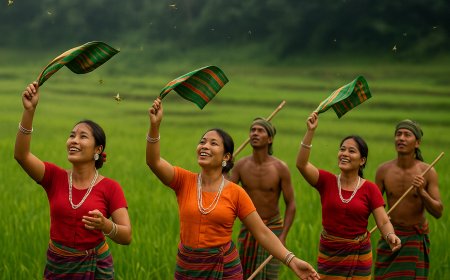Lebang : A Cultural Symbol of Tripura’s Tribal Heritage
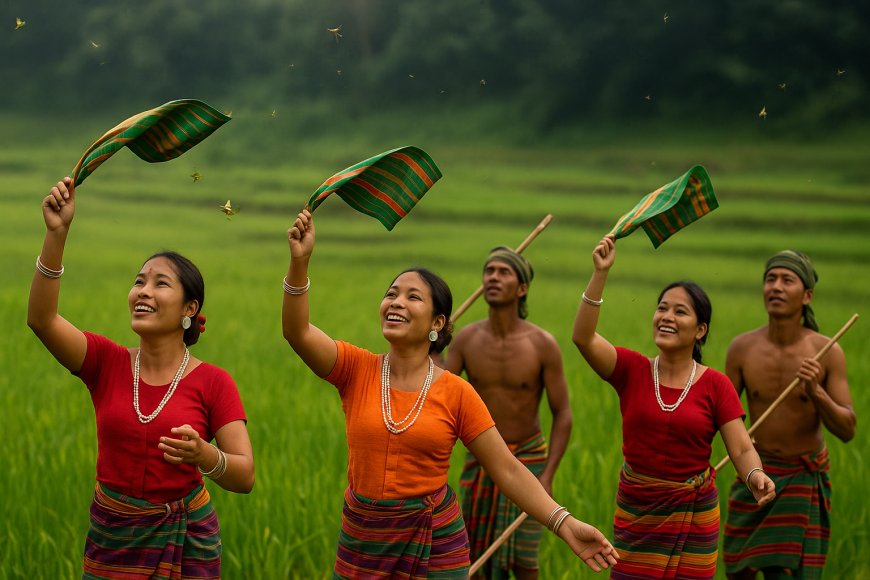
Introduction
India is a land of vibrant cultures and deep-rooted traditions, with each region offering unique customs and art forms that reflect the spirit of its people. In the northeastern state of Tripura, one such cultural gem is the traditional folk dance known as Lebang Boomani. This dance is more than just a form of entertainment; it is a celebration of nature, community, and the hope for a bountiful harvest. The word "Lebang" refers to a colorful insect that appears during the jhum (shifting cultivation) season, and it forms the central symbol of this captivating performance.
The Origin of Lebang Boomani:
Lebang Boomani is primarily performed by the indigenous Tripuri tribes of Tripura. The dance is traditionally associated with the agricultural cycle, especially during the pre-harvest season. When the crops begin to sprout and nature awakens in vibrant colors, the community comes together to perform this folk dance as a symbolic prayer for prosperity and a good harvest.
The word "Lebang" refers to the multicolored insects that appear in the fields during this season, while "Boomani" refers to the rhythmic clapping sounds made by bamboo clappers used by male performers to attract the lebangs. These clapping sounds represent harmony with nature and the rhythmic pattern of agricultural life.
The Performance: A Harmony of Sound, Movement, and Color
The Lebang Boomani dance involves both men and women, each playing distinct roles. The men carry bamboo clappers called tokkas or bamboo clappers and beat them rhythmically to imitate the sounds of nature. As they walk through the fields, they produce a percussive sound that mimics the hum of the insects they aim to attract.
The women, on the other hand, move gracefully behind them, holding colorful scarves or handkerchiefs, trying to catch the lebangs that fly up as they are disturbed by the sound. The more lebangs the women catch, the more it is believed that the community will be blessed with a rich harvest. The entire performance is a beautifully choreographed interplay between man and nature, human effort, and divine hope.
The costumes worn during the dance are traditional Tripuri attires. Women wear rignai (a type of hand-woven wraparound cloth), risa, and rikutu, adorned with silver and bronze jewelry, while men wear kamchwlwi borok, rigwnai, and headgear made from feathers or flowers.
Musical Elements
Lebang Boomani is accompanied by a range of traditional musical instruments. The key instruments include:
1. Kham – A large drum made of wood and animal skin.
2. Sumui – A bamboo flute producing melodious tunes that complement the rhythm.
3. Sarinda – A string instrument played with a bow.
4. Tuila – Another bamboo wind instrument.
These instruments combine to create a mystical ambiance that transports the audience into the heart of Tripura’s hills and valleys.
Cultural Significance
Lebang Boomani is not just a dance; it is a living tradition that connects the Tripuri people to their roots. The dance highlights the community’s dependency on agriculture and their reverence for the natural environment. It reflects the close-knit structure of tribal society, where every member has a role to play in ensuring the prosperity of the village.
It is also a celebration of community bonding, where villagers, regardless of age or gender, participate or enjoy the performance together. Through this dance, cultural values such as teamwork, joy, hope, and gratitude are passed down through generations.
Lebang in Modern Times
With modernization and urbanization, traditional art forms across India have seen a decline. However, Lebang Boomani has managed to survive, thanks to efforts by the Tripura government, cultural organizations, and passionate individuals who seek to preserve and promote indigenous traditions.
Today, the dance is often performed at cultural festivals, school functions, and tourism events. The Lebang Festival, organized in various parts of Tripura, is a major attraction for tourists and locals alike. The vibrant costumes, the synchrony of movements, and the spiritual essence of the performance continue to leave audiences spellbound.
Many young Tripuris are now taking pride in learning and performing their traditional dances. Schools and cultural institutions include folk arts in their curriculum to instill a sense of identity and heritage among the youth.
Lebang Beyond Tripura
While Lebang Boomani is native to Tripura, its fame has crossed regional borders. Cultural troupes from Tripura have performed Lebang Boomani in national and international platforms, showcasing the richness of tribal heritage from the Northeast. It has found a place in folk festivals across India and abroad, where it is appreciated for its colorful aesthetic and deep symbolic meaning.
Symbolism of Lebang
The insect lebang holds a special symbolic significance in the dance. It represents nature’s unpredictable blessings. The act of catching the lebangs signifies human effort and cooperation with natural forces to achieve success. It also serves as a visual metaphor for reaping the rewards of collective labor.
In a way, the dance portrays the rhythm of life: persistence, faith, and unity can help a community flourish even amidst uncertainty.
Preservation and Challenges
Despite its beauty and cultural depth, Lebang Boomani faces several challenges. These include:
1. Lack of Documentation – Traditional dances like Lebang Boomani have been passed down orally. There is a need for proper documentation through books, videos, and research.
2. Declining Interest – Urban youth sometimes show less interest in traditional art forms. Without active encouragement, this rich heritage could fade away.
3. Economic Constraints – Many tribal artists lack the financial support to continue performing or training others.
4. Limited Exposure – Outside of the Northeast, many people are unaware of the existence and importance of such cultural treasures.
To preserve this cultural heritage, local governments, NGOs, and educational institutions must continue to provide platforms, recognition, and funding for folk artists.

